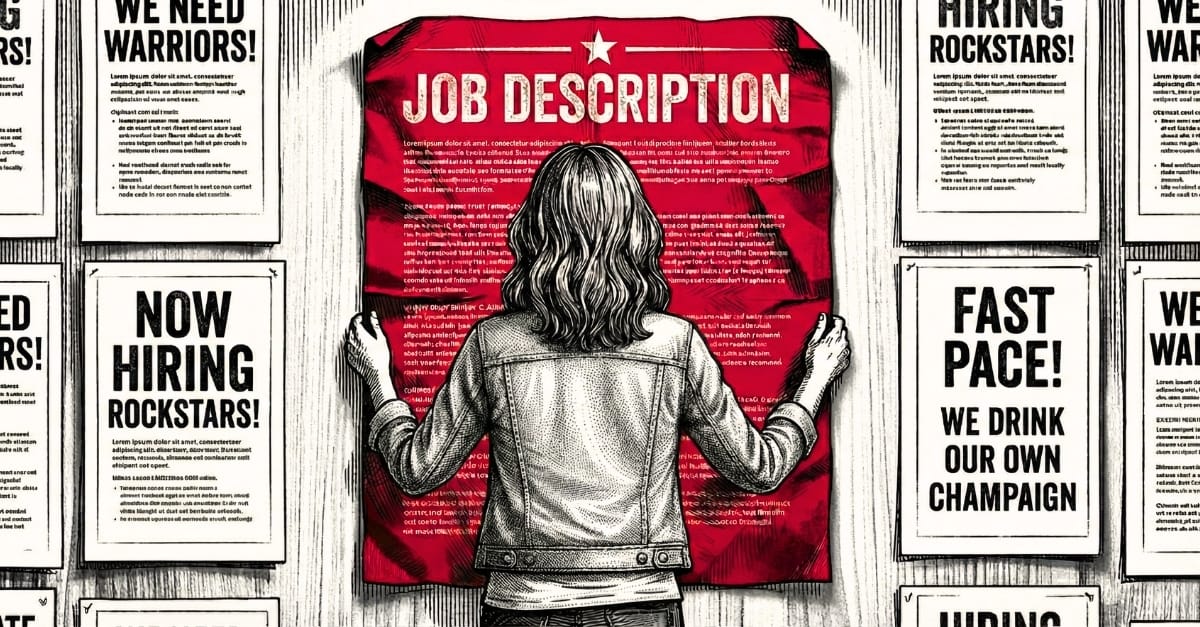Employee absenteeism is a real problem for many businesses. When employees don’t show up for work, it’s their team members who have to cover for them. Now you’re paying an employee who isn’t there, and possibly paying overtime to the employees who have to take over their duties while still completing their own.
This creates a negative workplace culture prone to burnout, resentment, and disengagement. This kind of culture isn’t just dismal for team morale—it has a significant impact on your company’s bottom line as well.
Let’s dig into employee absenteeism: what causes it, its impact on organizations, legal considerations, as well as strategies and tools for how to proactively manage absenteeism.
What is employee absenteeism?
Employee absenteeism refers to an employee’s chronic absence from work. It’s not about taking a necessary sick day or vacation time. It’s about a problematic pattern of unexpected absences that disrupt an organization’s operations.
Absenteeism is typically separated into two types: voluntary and involuntary.
Voluntary absenteeism
Voluntary absenteeism refers to an employee who chooses not to be at work despite being able to. They’re not ill, they don’t have an appointment; they simply choose to show up without a valid reason. It’s often a symptom of a larger issue, such as burnout, dissatisfaction with the job, disengagement, or a negative workplace culture.
Examples of voluntary absenteeism:
- Calling in sick when they’re healthy
- Failing to show up for a scheduled shift without notifying management
- Leaving early or arriving late without permission
- Taking breaks or lunches that exceed the agreed-upon time limit
Involuntary absenteeism
Involuntary absenteeism refers to unexpected but legitimate absences that occur due to factors beyond an employee’s control. These absences are unplanned but excusable and do not point to a pattern of chronic absence. x
Examples of involuntary absenteeism:
- Sudden illness or injury
- Family emergencies
- Death in the family
- Unexpected issues like car trouble or severe weather
- Legally protected leave

Integrate PI with your existing workflow
With 97+ integrations, you can keep everything in sync to align your talent strategy with business goals.
Absenteeism rate
The most common metric for calculating an absenteeism rate is, no surprise here, the Absenteeism Rate.
It calculates the percentage of total working time lost due to unexpected employee absences. You can calculate this for an employee, a team, a department, or the entire organization over a specific period, such as a month, quarter, or year.
This is the formula: Absenteeism Rate (%) = (Total Number of Absent Days / Total Number of Available Workdays) x 100.
Calculate the Absenteeism Rate by:
- Determining the period/time frame
- Counting the absent days (not including holidays, vacation, or pre-approved leave)
- Calculate the total number of available workdays for the person or group being evaluated within the time frame. For example, if a team of 5 people works 20 days in a month, the total available workdays are 100 (5 employees x 20 days).
- Apply the formula.
Impacts of absenteeism on organizations
When employees regularly miss work, it creates problems that go way beyond an empty desk. It can create a ripple effect that permeates the entire organization and erodes productivity.
Productivity losses
Someone else has to pick up the work, or it simply doesn’t get done. Projects get delayed, deadlines slip, and team members end up juggling extra responsibilities. In collaborative environments, one person’s absence can slow everyone down.
This results in rushed work, missed opportunities, and managers scrambling to reassign tasks instead of focusing on their own priorities.
Financial implications
The costs add up fast. You’re paying the absent employee plus overtime for others covering their work, possibly hiring temps, and dealing with lost productivity. Unscheduled absences can cost thousands per employee annually, and that’s not counting the ripple effects like delayed projects or missed sales opportunities.
Diminished team morale and cohesion
Constantly covering for absent colleagues burns people out. Team members start feeling resentful, especially if they think some people are gaming the system. This creates tension, erodes trust, and can spiral into a negative culture where everyone feels disengaged, which just leads to even more absences.
Customer impact
Service and delivery suffer when customer-facing employees are absent. Customers wait longer, get lower-quality service from less experienced replacements, and ultimately, may take their business elsewhere. In sales roles, absences can mean missed deals and lost revenue.

Strategies to reduce employee absenteeism
When addressing attendance issues with employees, what is considered excessive calling out?
It’s essential to understand that designing an action plan for absenteeism at work isn’t about punishing employees. It’s about creating an engaging, inclusive, and supportive workplace that makes people want to show up. A strategic approach focuses on both prevention and proactivity.
Invest in employee wellness.
The best way to reduce absences is to keep people healthy in the first place.
Go beyond basic gym memberships and offer mental health support through Employee Assistance Programs, stress management workshops, and mindfulness resources. Promote preventive care with on-site flu shots and health screenings, and encourage people to actually use their health benefits.
Most importantly, create a culture where taking care of yourself is valued. Encourage breaks and make it clear that working while sick isn’t heroic.
Make work more flexible.
Rigid schedules often force people to choose between work and life responsibilities.
Flexible hours let employees handle appointments and family needs without taking full days off. Remote and hybrid work options can eliminate absences due to minor illness, childcare issues, or even traffic problems.
A generous PTO policy also encourages people to plan their time off instead of calling in unexpectedly when they’re burned out.
Set clear expectations.
Everyone needs to know what’s expected and what happens if they don’t meet those expectations. Define what counts as legitimate absence versus unexcused time off, make sure every employee understands the policy from day one, and create a simple process for reporting absences.
The key is consistency. Apply the rules fairly to everyone, or you’ll create resentment and even more problems.
Keep people engaged.
Disengaged employees find reasons to avoid work. Combat this by regularly recognizing good work, fostering a positive team culture, and providing growth opportunities that make people feel invested in their future with the company.
Consider “stay interviews” to understand what keeps your best people motivated before they start looking for the exit.
Absenteeism legal considerations
Now, you may be wondering how to discuss absenteeism with an employee, if and when to send a letter of warning to an employee for absenteeism, or policies around terminating employees for excessive absenteeism.
However, there are a number of legal considerations to consider before taking any drastic action.
Understanding employee rights and employer obligations
Managing absenteeism isn’t just about company policy; it’s about following federal laws that protect employee rights.
Many absences are legally protected, and penalizing employees for taking them can land your organization in legal trouble. Balance business needs with employee rights by understanding when you can and can’t take disciplinary action.
Navigating key employment laws
The Family and Medical Leave Act (FMLA) requires covered employers to provide up to 12 weeks of unpaid, job-protected leave for serious health conditions, family care, or new children. Employees regain their jobs when they return, and you can’t count FMLA absences against them in attendance policies.
The Americans with Disabilities Act (ADA) requires reasonable accommodations for employees with disabilities, which might include time off for medical appointments or treatment. Work with the employee to find solutions that don’t create undue hardship for your business. Automatically penalizing these absences can violate the ADA.
Crafting compliant attendance policies
Your attendance policy needs to account for protected leave. “No-fault” policies that count every absence regardless of reason are legal minefields, often violating FMLA, ADA, and other laws. Instead, clearly define what counts as excessive absenteeism while carving out exceptions for legally protected time off.
Apply your policy consistently to avoid discrimination claims, establish a clear disciplinary process, and exercise caution when requesting documentation. You can request medical certification for FMLA or ADA situations, but you must handle it properly to avoid potential privacy violations.
The key is obtaining legal guidance when drafting policies and training managers on their responsibilities and limitations. A poorly handled absence situation can turn into an expensive lawsuit, even if your intentions were good.

Tools and technologies for managing absenteeism
Track the numbers, but address the root causes. When people are in the right roles with good managers, they show up.
Modern attendance tracking solutions
Spreadsheets are relics of the past. Dedicated attendance software provides real-time visibility and automated tracking. Mobile apps let employees report absences instantly, reducing no-shows.
The power of integration
When attendance systems connect to payroll, benefits, and performance management, everything flows automatically. You get complete employee records in one place and can track complex leave types like FMLA while staying compliant.
Turn data into action
Modern software spots patterns, like Monday absences or department-specific spikes, that point to deeper issues like burnout or workplace culture problems. Advanced systems even predict future trends, helping you staff proactively.
Understand the root cause of absenteeism with The Predictive Index.
Attendance software tells you what’s happening, but PI tools reveal why. The PI Behavioral Assessment identifies misalignment between people and roles—a major cause of burnout and voluntary absences. PI Job Targets analysis helps place people in roles that fit their natural behaviors, while manager training ensures leaders can support their teams effectively.
How Builtech’s reduced absenteeism and turnover
When employees are unhappy at work, they’ll do what they can to avoid it, whether simply not showing up, showing up to perform the bare minimum, or leaving the company entirely.
Builtech, a general contracting and construction management firm, applied behavioral insights from The Predictive Index software to improve its hiring efforts, reduce friction, decrease absenteeism, and mitigate conflict among its people.
These are Builtech’s results since implementing PI’s behavioral data:
- $180,00 saved annually in attrition costs
- 7 workplace awards and an improved workplace culture
- 100% of Builtech employees agree with the statement: “Our senior leaders value people as their most important resource”
- 85% of employees report being “highly engaged,” while none are “disengaged”
- 10/10 of the executive team members have been at Builtech for at least five years
When people better understand themselves and their strengths, as well as the preferences and strengths of their coworkers, communication is made dramatically easier. When people feel seen and valued for who they are, they want to show up for work and perform at their best.
Proactively address absenteeism.
Chronic absenteeism in the workplace isn’t just an HR issue—it’s a business problem that affects everything from your team’s morale to your company’s reputation and bottom line. Get ahead of it by investing in employee wellness, setting clear expectations, keeping people engaged, and introducing more flexible schedules and remote/hybrid work opportunities.
Utilize attendance software integrated with your payroll, benefits, performance management, and behavioral assessments. But don’t get confused and bogged down with a mix-and-match tech stack.
Bridge for your tech-stack gaps by seamlessly integrating your pre-hire efforts with your employee engagement and retention priorities—and everything in between.
The Talent Optimization Essentials bundle puts everything in one place, with behavioral data tying it all together. It’s the easiest way yet to fully integrate talent optimization with your organization.
Learn what the PI Talent Optimization Essentials can do for you and your team.








